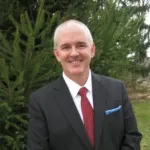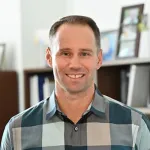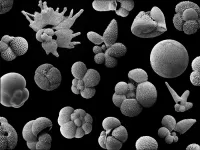(Press-News.org) In today's digital age, social media platforms like TikTok have become integral parts of our lives, offering not just entertainment and catchy dances but also a wealth of information on topics ranging from home improvement to world news. According to some reports, many young people even prefer to use social media in place of traditional search engines like Google when looking for answers.
Health information is no exception. Hashtags like #celiactok, #diabetestok and #sinustok have millions of views, with each tag leading to countless videos about each health issue.
“Every type of ‘Tok’ exists – that’s just how the internet works,” said Rose Dimitroyannis, a third-year medical student at the University of Chicago Pritzker School of Medicine. “Little tiny segments of the population find one another and make waves.”
It can be a great thing for people who share health concerns to find one another. Unfortunately, they — and anyone else who views health-related social media content — may also find misinformation. While some trends are relatively harmless, like when people were putting potatoes in their socks overnight to “draw out toxins,” others can be dangerous, such as anti-vaccine content or videos that encouraged people to drink borax with their morning coffee.
“There is high-quality and factual information out there on social media platforms such as TikTok, but it may be very difficult to distinguish this from information disseminated by influencers that can actually be harmful,” said Christopher Roxbury, MD, a surgeon and rhinology expert at UChicago Medicine.
Dimitroyannis, Roxbury and other UChicago researchers recently published a new study in which they systematically analyzed health information on TikTok to see if they could identify trends in video quality — how much misinformation is out there, and does it come from specific types of content creators? They found that nearly half of the videos they analyzed contained non-factual information, with a large proportion of misleading videos coming from nonmedical influencers.
The researchers’ analysis allowed them to offer advice to help lay audiences identify trustworthy health information on social media, along with insights that could help medical professionals disseminate high-quality health information that will reach more viewers.
Diving into #sinustok
To narrow the scope of the study for manageable analysis, the researchers focused on a specific health condition and performed their search during a single 24-hour period to limit the effects of TikTok’s ever-shifting algorithm. They searched TikTok using specific hashtags related to sinusitis, including #sinusitis, #sinus, and #sinusinfection, cataloged the videos based on uploader types, content categories and content types, and assessed the quality of the videos using a range of metrics including understandability, actionability and reliability. These assessments relied not just on the researchers’ judgment but on validated empirical tools like the Patient Education Materials Assessment Tool for Audiovisual Material.
Around 44% of the videos contained non-factual information. Videos from “nonmedical influencers” — content creators with over 10,000 followers who did not self-identify as medical professionals — accounted for almost half of all videos and were more likely to contain misinformation and have lower quality scores. Lay individuals’ videos were more often about daily life or comedy rather than attempting to impart medical advice. Medical professionals overwhelmingly produced educational content and received higher scores for video quality, factual information and harm/benefit comparisons.
Potential dangers of health misinformation
The proliferation of non-factual videos about medical conditions, treatments or preventative measures can not only lead to confusion but can also result in detrimental health outcomes. Some “treatments” promoted on social media are genuinely dangerous. There are also subtler effects: people may miss out on getting much-needed medical care because they’ve turned to ineffective alternative treatments promoted online, or because their trust in healthcare professionals and institutions has been eroded.
“I frequently have patients in the clinic asking me questions about things they saw online or on social media, and I have found that many times the information has steered patients in the wrong direction,” said Roxbury, the study’s senior author. “In some cases, I see patients who have already sought out and undergone such treatment without any benefit; in rarer cases, they’ve been harmed.”
For example, during the period when the researchers were analyzing sinusitis-related TikToks, there was a trend of people shoving whole cloves of garlic up their noses to relieve congestion. Blowing one’s nose after inserting garlic does expel more mucus, but only because the garlic causes irritation, which increases mucus production. Meanwhile, people put themselves at risk of damaging nasal tissue or inhaling the garlic so far up their noses that it clogs the nasal passages.
"Just to put it out there — don't put garlic in your nose,” Dimitroyannis said with a smile. "It wasn't coming from a bad place, but as many trends do, it tended to become quite unsafe."
Wielding social media wisely
“As a clinician, you can't deny that anyone who comes into your office has probably looked something up — which is well within their rights to try to understand their health,” said Dimitroyannis, the lead author of the recent paper. “At the end of the day, patients and physicians alike should understand the power of this tool, recognizing the downsides while acknowledging that there can be good quality information available as well.”
For the general public, the researchers said their results emphasize the importance of critically evaluating health information online, cross-referencing information with reliable sources and consulting one’s own trusted healthcare professionals when in doubt.
“Medical professionals are people; they can still say wrong things,” Dimitroyannis acknowledged. “But overall, health experts are posting more beneficial content.” In the study data, only 15% of videos from medical professionals contained non-factual information, compared to nearly 60% of videos from nonmedical influencers.
Even though nonmedical influencers’ videos generally had lower quality scores and contained more misinformation, they had greater visibility because they were by far the most prolific group in the study’s sample. The researchers say this imbalance should prompt healthcare professionals to be more active on social media. They offered tips medical experts could use for increasing accessibility or combatting existing misinformation, such as using the “stitch” and “duet” features on TikTok.
“If you’re a healthcare expert with any interest in content creation, you could make a difference,” Dimitroyannis said. “Someone could see your video and get the health information they need instead of seeing something that could hurt them.”
The study, “A Social Media Quality Review of Popular Sinusitis Videos on TikTok,” was published in Otolaryngology–Head and Neck Surgery in March 2024. Co-authors include Rose Dimitroyannis, David Fenton, Stella Cho, Rachel Nordgren, Jayant M Pinto and Christopher R Roxbury.
END
Health information on TikTok: The good, the bad and the ugly
2024-04-23
ELSE PRESS RELEASES FROM THIS DATE:
New study points to racial and social barriers that block treatment for multiple myeloma
2024-04-23
A UC Davis Health study reveals persistent racial and social disparities preventing access to autoHCT, a common bone marrow transplant treatment to halt the progression of multiple myeloma.
An analysis of data from three California health care organizations, published in Clinical Lymphoma, Myeloma & Leukemia, showed that Black myeloma patients were less likely to receive autoHCT. This was despite having a greater risk of developing the cancer than other racial or ethnic groups. Patients using Medicaid, Medicare, or no insurance in California also accessed the treatment less than those with other insurance ...
Rensselaer researcher finds that frog species evolved rapidly in response to road salts
2024-04-23
When we think of evolution, we think of a process that happens over hundreds or thousands of years. In research recently published, a team led by Rick Relyea, Ph.D., professor of biological sciences and David M. Darrin ’40 Senior Endowed Chair at Rensselaer Polytechnic Institute, found a species of frog that has evolved over the course of merely 25 years. The adaptation was spurred on by something many assume is innocuous: salt.
“We’ve been applying de-icing salts to reduce car accidents in snowy and icy conditions in the United States for 80 years, and we currently apply four times more road salt than we did ...
A new chapter in quantum vortices: Customizing electron vortex beams
2024-04-23
A new publication from Opto-Electronic Advances; DOI 10.29026/oea.2024.230184 , discusses tailoring electron vortex beams with customizable intensity patterns by electron diffraction holography.
In recent years, the scientific community has witnessed a notable breakthrough in the study and development of electron vortices. Electron vortices are electron beams that carry orbital angular momentum, meaning the electrons move not only in their propagation direction but also rotate in a vortex-like manner. This unique characteristic offers many new physical properties and potential applications, making it a powerful ...
Don’t be a stranger – study finds rekindling old friendships as scary as making new ones
2024-04-23
sychologists from Simon Fraser University (SFU) and the University of Sussex have found that people are as hesitant to reach out to an old friend as they are to strike up a conversation with a stranger, even when they had the capacity and desire to do so. The new research is published today in the journal Nature Communications Psychology.
Scientific research has shown that social relationships are important to human happiness, and that the greater the number and range of friendships that we engage with, the better our wellbeing. But once relationships are formed, some ...
There’s no ‘one size fits all’ when it comes to addressing men’s health issues globally
2024-04-23
Even with important strides in addressing health issues across the globe, men have not benefited equally compared to women. Men’s life expectancies have not grown as steadily as women’s over the past few decades, and they are expected to live about five years less than women, according to 2021 global health data from the Human Mortality Database and the United Nations’ World Population Prospects. The discrepancy in life expectancy between men and women persists in places all over the world, and is even growing in other places.
At a time when health resources are at a premium and need to be wisely allocated, health professionals ...
Comparison of the “late catch-up” phenomenon between BuMA Supreme and XIENCE stents through serial optical coherence tomography at 1–2 month and 2 year follow-ups: A multicenter study
2024-04-23
https://www.scienceopen.com/hosted-document?doi=10.15212/CVIA.2024.0024
Announcing a new article publication for Cardiovascular Innovations and Applications journal. This study was aimed at comparing the “late catch-up” phenomenon between the BuMA Supreme bioresorbable polymer sirolimus-eluting stent and the XIENCE stent through serial optical coherence tomography (OCT) at within 2 months and 2 year follow-ups.
A total of 49 of 75 patients from the PIONEER-II study were enrolled in a 2 year OCT follow-up study; 44 patients with 50 lesions were included in the statistical ...
Marine plankton communities changed long before extinctions
2024-04-23
For hundreds of millions of years, the oceans have teemed with single-celled organisms called foraminifera, hard-shelled, microscopic creatures at the bottom of the food chain. The fossil record of these primordial specks offers clues into future changes in global biodiversity, related to our warming climate.
Using a high-resolution global dataset of planktonic foraminifera fossils that’s among the richest biological archives available to science, researchers have found that major environmental stress events leading to mass extinctions are reliably preceded by subtle changes in how a biological ...
Research reveals tools to make STEM degrees more affordable
2024-04-23
In a new study in Issues, Dominique J. Baker, an associate professor in the College of Education and Human Development and the Joseph R. Biden, Jr. School of Public Policy & Administration at the University of Delaware, explored the role of student loans on hopeful students striving for college degrees, particularly in STEM.
The cost of attending a public four-year college in the United States has more than doubled since the early 1990s, when inflation is factored in.
Undergraduate student loan debt has become unmanageable for a wide swath of borrowers ...
Q&A: UW research shows neural connection between learning a second language and learning to code
2024-04-23
As computer programming becomes an increasingly valued skill in the workforce, there is a greater need to understand how people learn to code most effectively.
Statistics show that up to 50% of students who enroll in introductory programming courses in the United States eventually drop out, suggesting a mismatch between how coding is learned and the way it’s taught. A new study from the University of Washington, published March 5 in Scientific Reports, examines that issue.
The researchers recorded electrophysiological brain responses of varyingly skilled programmers as they read ...
Keane wins 2024 Gopal K. Shenoy Excellence in Beamline Science Award
2024-04-23
Physicist Denis T. Keane is the 2024 recipient of the Gopal K. Shenoy Excellence in Beamline Science Award. He is a beamline scientist and director of the Dupont-Northwestern-Dow Collaborative Access Team (DND-CAT) at the U.S. Department of Energy’s (DOE) Advanced Photon Source (APS) at DOE’s Argonne National Laboratory. He is also a research professor in the Materials Science and Engineering Department at Northwestern University.
The annual award recognizes active beamline scientists at the APS, ...



